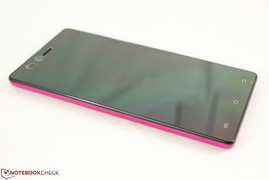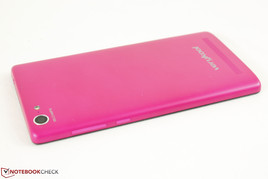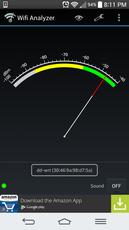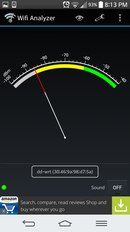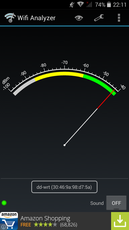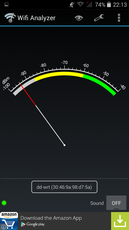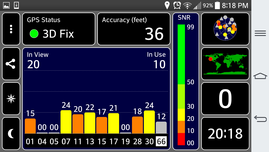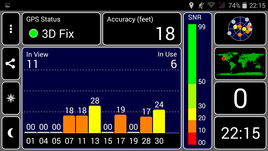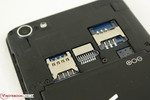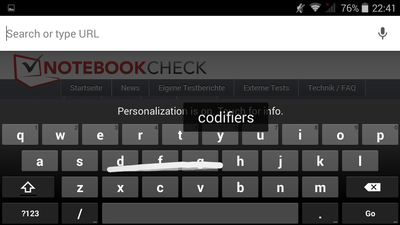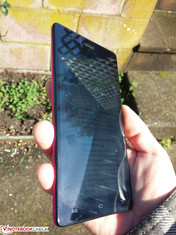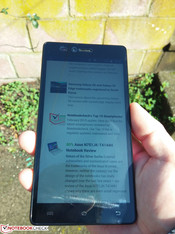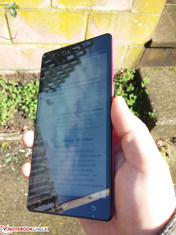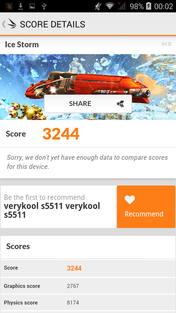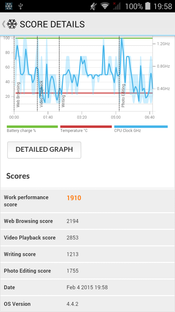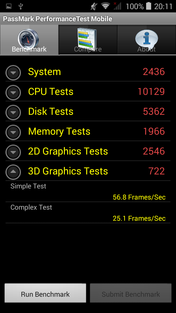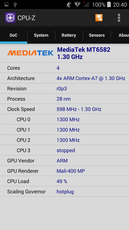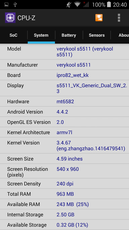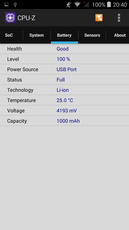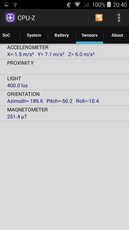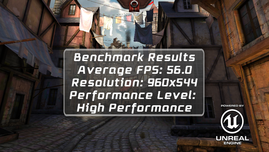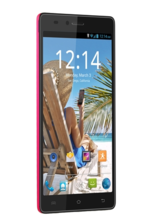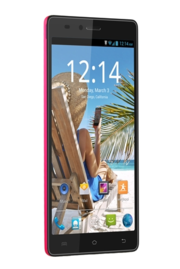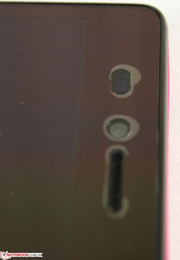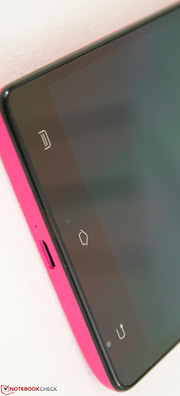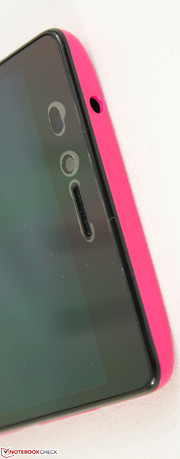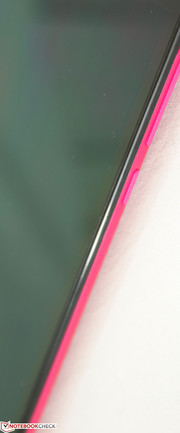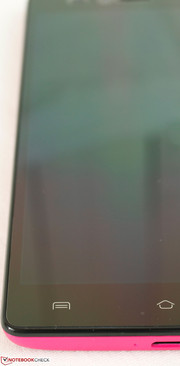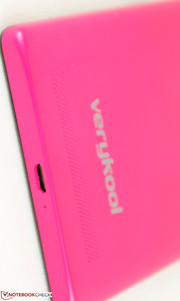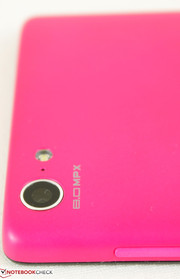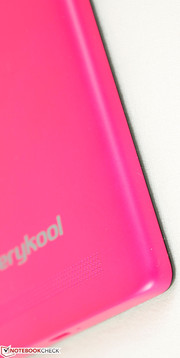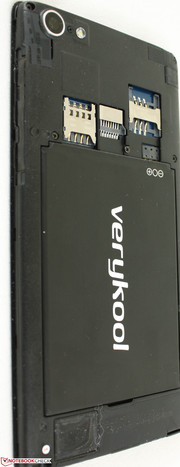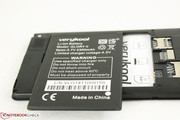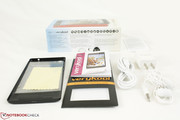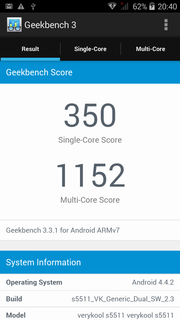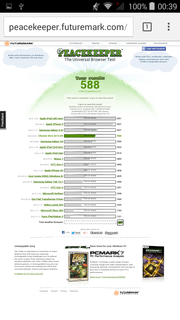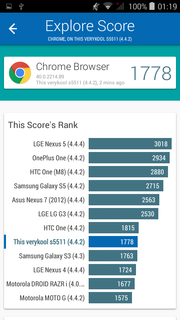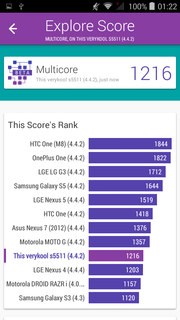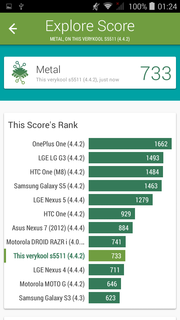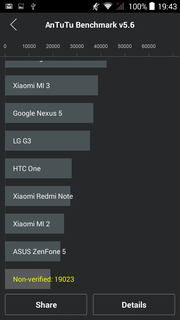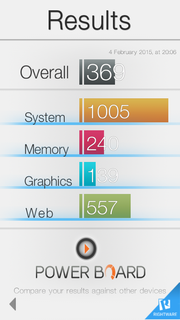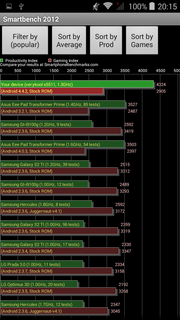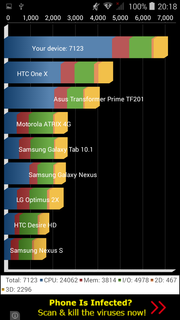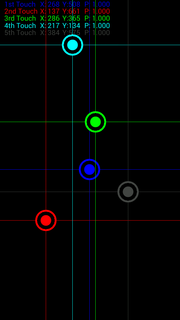Verykool s5511 Juno Quatro Smartphone Review

While there are now numerous inexpensive alternatives to the more popular smartphone brands, most of these alternatives are Chinese in origin including Xiaomi, ZTE, THL, and many others. As a result, customer service, compatibility with US networks, and sometimes quality can be hit or miss.
Verykool looks to fill in the gap with exceptional customer service and satisfaction as the brand is based right here in California. This essentially guarantees US buyers more reliable support and shipping as opposed to purchasing off of overseas online retailers.
Our first model from Verykool is the budget s5511 Juno Quatro, which carries an expansive 5.5-inch IPS display, 540 x 960 pixel resolution, MediaTek MT6582 SoC, 1 GB RAM, 4 GB ROM, dual SIM slots, and a microSD reader. The smartphone is also inexpensive at only $165 off-contract and competes directly against more commonly found Chinese brands. We take the s5511 for a quick spin to see if it is worth the price of admission.
Case
In terms of design, the s5511 is quite thin given the large form factor. The face is almost entirely screen space with just small portions of the bezel reserved for the earpiece and the dedicated Android keys. The corners and edges are curved and rounded off for a more comfortable grip and the back case is removable with different colors available. Compared to other 5.5-inch devices like the iPhone 6 Plus and LG G3, the Verykool lies right in between the two popular models in terms of size and thickness.
Case quality is plastic all-around as one would expect from a smartphone in this price category. There is no aluminum casing or glass protection as the phone arrives with a screen protector already on. Unfortunately, residual and very noticeable air bubbles remain underneath the screen protector, especially around the earpiece and camera. This makes an otherwise attractive front look cheap and "slapped on" at the last minute. Otherwise, the device feels surprisingly firm with no major depressions, twists, or creaking. It doesn't feel thick enough to survive a hard fall, however, so a protective case would still be a good idea for slippery hands.
Connectivity
Interfaces include the standard micro-USB 2.0 port for charging and data transfers and 3.5 mm audio. The microSD reader supports up to 32 GB, but requires removal of the back cover in addition to the battery for physical access.
The s5511 supports external mice and keyboards as well as expected from the KitKat software.
Communication & GPS
Wireless connectivity includes 802.11 b/g/n with integrated Bluetooth and Miracast. We experienced no issues when connected to a standard home network, but range is a little shorter when compared to the LG G2. Connection becomes spotty after about 20 meters while our LG G2 was at least able to maintain a connection reliably, however weak it may be.
On the other hand, GPS on the Verykool is quick and is able to establish a fix quite rapidly without network assistance. In comparison, the LG G2 takes about a minute or so longer according to GPS Test.
Telephone & Speech Quality
The s5511 officially supports 2G Quad-band (850/900/1800/1900), 3G Dual-band (850/1900), and 4G HSPA+ through GSM networks, most notably AT&T, T-Mobile, Cellular One, Airfire, and H2O Wireless. 4G support is the takeaway message as many Chinese alternatives are not compatible with 4G bands in the US. Verykool also pride themselves with dual SIM support on all their smartphones, so the s5511 accepts both 2FF (mini-SIM) and 3FF (micro-SIM) cards. Unfortunately, there is no Wi-Fi calling as opposed to the similarly priced Sharp Aquos Crystal.
Call quality is good as we are able to hear the other end without any breaks or other major issues. Voices sound a bit more hollow and with moderate static, however, so the earpiece is not perfect. Unfortunately, the LG G2 caller on the other end experienced recurring stutters that made it hard to understand exactly what we were saying through the s5511. Our reception with AT&T was at maximum during these tests.
Cameras
The front (2 MP) and rear (8 MP) cameras take decent pictures with minimal purple fringing and blurring that are all too common on budget or low MP cameraphones. At the same time, however, colors are inaccurate and lacking in detail. Images look a little overexposed as well, though other cameraphones like the flagship LG G2 suffer from the same issues to a lesser degree. Otherwise, the s5511 includes anti-flicker, face detection, HDR, and ISO (100 to 1600) features.
Video will record up to 720p at 18 frames per second and files are saved as .3gp. Quality is acceptable outdoors with little motion, but there is moderate blurring and static when panning or under low ambient lighting. Processing feels quick, so there is little delay before movement appears onscreen.
Input Devices
Touchscreen
The 5-point capacitive touchscreen should work great in theory due to the relatively low screen resolution and large 5.5-inch display, but it falls flat on the s5511. The problem is that the screen is not particularly sensitive, so the user must press down somewhat slowly and firmly to register inputs reliably. Thus, keys that are near the edges of the display like "q", "a", and "p" are easily missed by quick typists. We find it much easier to text on the more accurate touchscreens of the iPhone 6 or LG G2 for this very reason despite these models having smaller displays.
Display
Though marketed as a qHD smartphone, the 5.5-inch screen here is a sub HD 540 x 960 resolution display for a pixel density of 200 PPI. This is compared to the 534 PPI of the LG G3, but to be fair this is also much more expensive than the s5511. The 5.5-inch Huawei Ascend G7 uses a more standard 720p resolution for a roughly 30 percent increase in pixel density compared to our Verykool model. In other words, icons and texts will appear larger and generally softer than on competing smartphones.
Perhaps the most surprising aspect of the s5511 is the bright backlight. At maximum brightness, the display reaches an average of about 640 nits, which is brighter than most popular and high-end smartphones. The Nexus 6, for example, barely reaches half of what the backlight of the s5511 is capable of. Contrast is also very impressive at over 1000:1. We double-checked our readings with a separate Gossen Mavo-Monitor in order to confirm our surprising results.
| |||||||||||||||||||||||||
Brightness Distribution: 95 %
Center on Battery: 639.5 cd/m²
Contrast: 1200:1 (Black: 0.533 cd/m²)
ΔE ColorChecker Calman: 9.6 | ∀{0.5-29.43 Ø4.77}
ΔE Greyscale Calman: 7.53 | ∀{0.09-98 Ø5}
Gamma: 1.83
CCT: 8355 K
| verykool s5511 Mali-400 MP, MT6582, 4 GB Flash | Xiaomi Redmi Note 4G Adreno 305, 400 MSM8928, 8 GB eMMC Flash | Apple iPhone 6 Plus PowerVR GX6450, A8, 64 GB eMMC Flash | LG G3 Adreno 330, 801 MSM8974AC, 16 GB eMMC Flash | Sony Xperia Z3 Adreno 330, 801 MSM8974AC, 16 GB eMMC Flash | |
|---|---|---|---|---|---|
| Screen | -2% | 3% | -22% | -9% | |
| Brightness middle (cd/m²) | 639.5 | 446 -30% | 519 -19% | 417 -35% | 702 10% |
| Brightness (cd/m²) | 639 | 418 -35% | 496 -22% | 395 -38% | 671 5% |
| Brightness Distribution (%) | 95 | 87 -8% | 90 -5% | 89 -6% | 90 -5% |
| Black Level * (cd/m²) | 0.533 | 0.47 12% | 0.62 -16% | 0.96 -80% | 0.72 -35% |
| Contrast (:1) | 1200 | 949 -21% | 837 -30% | 434 -64% | 975 -19% |
| Colorchecker dE 2000 * | 9.6 | 5.1 47% | 3.67 62% | 5.67 41% | 8.92 7% |
| Greyscale dE 2000 * | 7.53 | 5.93 21% | 3.78 50% | 5.66 25% | 9.59 -27% |
| Gamma | 1.83 120% | 3.46 64% | 2.42 91% | 2.53 87% | 2.75 80% |
| CCT | 8355 78% | 7350 88% | 7327 89% | 7741 84% | 9408 69% |
| Color Space (Percent of AdobeRGB 1998) (%) | 59 |
* ... smaller is better
Color analyses with an X-Rite spectrophotometer reveal generally poor grayscale and color reproduction. Colors do improve at higher saturation levels, but only slightly. Even subjectively the colors do not appear as deep or detailed as on more mainstream smartphones. But for the average user, this shouldn't be an issue for day-to-day use.
Performance
The quad-core MediaTek MT6582 SoC is common on many budget devices, especially those from Chinese manufacturers like the Vphone I6, Huawei Ascend G730, and THL 4000. All four cores are capable of running at the rated 1300 MHz speed, but can independently idle or underclock to 600 MHz to save power. In general, users can expect raw CPU and GPU performance to be on par with the 3 to 4 year old Nvidia Tegra 3. For more information and benchmarks on the MediaTek MT6582 SoC, see our dedicated page here.
CPU benchmarks place the s5511 alongside the THL 4000 as both share the same SoC, and just slightly below the Xiaomi Redmi Note 4G with its entry-level Snapdragon 400 SoC. SmartBench and Quadrant show similar results to the HTC One X+ and its Tegra 3 APU, though raw performance favors the s5511 in LinPack. For the sake of comparison, the high-end Snapdragon 805 and Apple A8 are at least 2x or even 6x faster in raw power than the MediaTek core in the s5511.
| Geekbench 3 | |
| 32 Bit Multi-Core Score (sort by value) | |
| verykool s5511 | |
| Xiaomi Redmi Note 4G | |
| Samsung Galaxy Note 4 | |
| Huawei Ascend G750 | |
| Apple iPhone 6 Plus | |
| 32 Bit Single-Core Score (sort by value) | |
| verykool s5511 | |
| Xiaomi Redmi Note 4G | |
| Samsung Galaxy Note 4 | |
| Huawei Ascend G750 | |
| Apple iPhone 6 Plus | |
| Linpack Android / IOS | |
| Multi Thread (sort by value) | |
| verykool s5511 | |
| Samsung Galaxy Note 4 | |
| Huawei Ascend G750 | |
| Apple iPhone 6 Plus | |
| HTC One X+ | |
| Single Thread (sort by value) | |
| verykool s5511 | |
| Samsung Galaxy Note 4 | |
| Huawei Ascend G750 | |
| Apple iPhone 6 Plus | |
| HTC One X+ | |
| Smartbench 2012 | |
| Gaming Index (sort by value) | |
| verykool s5511 | |
| Samsung Galaxy Note 4 | |
| HTC One X+ | |
| Productivity Index (sort by value) | |
| verykool s5511 | |
| Samsung Galaxy Note 4 | |
| HTC One X+ | |
| AnTuTu v5 - Total Score (sort by value) | |
| verykool s5511 | |
| Samsung Galaxy Note 4 | |
| Apple iPhone 6 Plus | |
| AndEBench | |
| Java (sort by value) | |
| verykool s5511 | |
| Samsung Galaxy Note 4 | |
| Native (sort by value) | |
| verykool s5511 | |
| Samsung Galaxy Note 4 | |
| Quadrant Standard Edition 2.0 - --- (sort by value) | |
| verykool s5511 | |
| Samsung Galaxy Note 4 | |
| HTC One X+ | |
| PassMark PerformanceTest Mobile V1 | |
| 3D Graphics Tests (sort by value) | |
| verykool s5511 | |
| Samsung Galaxy Note 4 | |
| Apple iPhone 6 Plus | |
| 2D Graphics Tests (sort by value) | |
| verykool s5511 | |
| Samsung Galaxy Note 4 | |
| Apple iPhone 6 Plus | |
| Memory Tests (sort by value) | |
| verykool s5511 | |
| Samsung Galaxy Note 4 | |
| Apple iPhone 6 Plus | |
| Disk Tests (sort by value) | |
| verykool s5511 | |
| Samsung Galaxy Note 4 | |
| Apple iPhone 6 Plus | |
| CPU Tests (sort by value) | |
| verykool s5511 | |
| Samsung Galaxy Note 4 | |
| Apple iPhone 6 Plus | |
| System (sort by value) | |
| verykool s5511 | |
| Samsung Galaxy Note 4 | |
| Huawei Ascend G750 | |
| Apple iPhone 6 Plus | |
System Performance
General system performance is moderately slow. Scrolling and zooming gestures are generally smooth, but there is a slight input delay before seeing the appropriate onscreen responses. For example, pressing the Home or Back button will almost always be met with a longer-than-usual delay, which makes us second guess ourselves if the button was even pressed at all. This is where high-end models take the crown as the s5511 simply takes longer to jump between applications with more frequent delays and frame skips. The browser-based benchmarks below show the Verykool smartphone falling behind more mainstream devices.
Our video playback tests on YouTube is smooth with no frame skip or audio delay issues. The drawbacks of the low screen resolution become very apparent here as videos appear blurry and are essentially limited to 360p or 480p. If loading the phone with videos, we recommend 480p or 720p .mov files for compatibility.
| Mozilla Kraken 1.1 - Total (sort by value) | |
| verykool s5511 | |
| Xiaomi Redmi Note 4G | |
| Samsung Galaxy Note 4 | |
| Apple iPhone 6 Plus | |
| Google V8 Ver. 7 - Google V8 Ver. 7 Score (sort by value) | |
| verykool s5511 | |
| Samsung Galaxy Note 4 | |
| Apple iPhone 6 Plus | |
| HTC One X+ | |
| Peacekeeper - --- (sort by value) | |
| verykool s5511 | |
| Samsung Galaxy Note 4 | |
| Huawei Ascend G750 | |
| Apple iPhone 6 Plus | |
| HTC One X+ | |
| Browsermark | |
| 2.1 (sort by value) | |
| verykool s5511 | |
| Samsung Galaxy Note 4 | |
| Huawei Ascend G750 | |
| --- (sort by value) | |
| HTC One X+ | |
| PCMark for Android - Work performance score (sort by value) | |
| verykool s5511 | |
| Samsung Galaxy Note 4 | |
* ... smaller is better
Storage Devices
The internal 4 GB of storage space is very small as only about 2.45 GB is immediately available to the user for music, movies, apps, and other files. Luckily, the aforementioned microSD slot accepts cards up to 32 GB for much needed additional storage. Nonetheless, AndroBench reports respectable speeds for the internal SSD as read and write speeds are similar to more well-known models.
Gaming Performance
The low display resolution scales well to the old integrated ARM Mali-400 MP GPU. 3D titles off the Play Market run well at acceptable frame rates including N.O.V.A. 3. 3DMark places this smartphone alongside the budget LG L Bello and Lenovo IdeaPad A10 tablet. Generally speaking, any title playable on the old Tegra 3 will be playable here on the s5511. 2D games in particular work well with the large display size.
| 3DMark Ice Storm Standard Score | 3244 points | |
Help | ||
Emissions
Temperature
Idling surface temperatures are flat across the board on both sides of the device. Maximum load via the Stability Test app does raise temperatures by a noticeable margin, but this is unrealistic of everyday tasks. However, this does show that users may feel the left side of the smartphone (nearest the earpiece) become warmer than the right side after extended use or gameplay. Fortunately, the change in temperature is not enough to cause discomfort or stability issues.
(+) The maximum temperature on the upper side is 37.4 °C / 99 F, compared to the average of 35.2 °C / 95 F, ranging from 21.9 to 247 °C for the class Smartphone.
(+) The bottom heats up to a maximum of 35.8 °C / 96 F, compared to the average of 34 °C / 93 F
(+) In idle usage, the average temperature for the upper side is 26.7 °C / 80 F, compared to the device average of 32.9 °C / 91 F.
Speakers
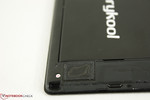
The single speaker on the back of the s5511 produces good sound considering the price. Volume is loud with acceptable bass and little vibration for a smartphone. However, the maximum volume setting (or near maximum) can produce some residual and audible static, so it may be best to play at lower volumes or use earphones altogether.
Battery Life
Battery power is provided by a removable 2300 mAh Li-ion module. This is at least 600 mAh less than other 5.5-inch devices like the Huawei Ascend G750 (3000 mAh), iPhone 6 Plus (2915 mAh), LG G3 (3000 mAh), and the Xiaomi Redmi Note (3100 mAh). As a result, runtimes on the s5511 are notably shorter than these competing devices despite having less power-hungry internals. Nonetheless, 7 hours of constant WLAN use (at a brightness of 150 nits) should be sufficient for even the most arduous of workdays.
| verykool s5511 Mali-400 MP, MT6582, 4 GB Flash | Xiaomi Redmi Note 4G Adreno 305, 400 MSM8928, 8 GB eMMC Flash | Samsung Galaxy Note 4 Adreno 420, 805 APQ8084, 32 GB eMMC Flash | Huawei Ascend G750 Mali-450 MP4, MT6592, 8 GB SSD | Apple iPhone 6 Plus PowerVR GX6450, A8, 64 GB eMMC Flash | |
|---|---|---|---|---|---|
| Battery runtime | 17% | 80% | 51% | 52% | |
| Reader / Idle (h) | 13.7 | 16.4 20% | 27.8 103% | 23.9 74% | |
| WiFi (h) | 7 | 11 57% | 12.4 77% | 10.6 51% | 13 86% |
| Load (h) | 3.4 | 2.5 -26% | 5.4 59% | 3.3 -3% |
Verdict
The Verykool s5511 is your standard budget smartphone with a couple of surprises. Firstly, we have to mention the extraordinarily bright display that bests nearly all mainstream smartphones and rivals even the flagship Sony Xperia Z3. This must have the brightest display of any budget smartphone currently available, which makes the s5511 ideal for use outdoors and under sunlight.
On the flip side, display quality is merely average despite the high brightness and contrast due to poor color reproduction and a low native resolution. Videos and icons are not very sharp compared to more standard 1080p or even 720p devices. Furthermore, the touchscreen itself could be more reliable; We find it easier and more accurate texting on the smaller LG G2 or iPhone 6 than on the larger s5511. If the touchscreen and resolution can be improved in the next iteration with added Wi-Fi calling, then this would automatically be an excellent bang for the buck.
GSM users looking for a large, inexpensive, and 4G-capable dual SIM solution for outdoor use will find the Verykool s5511 to be worth a look as it is quite thin and well-made considering the low $165 price point.


